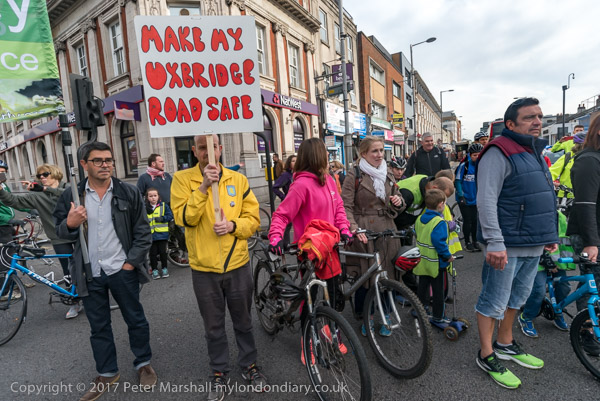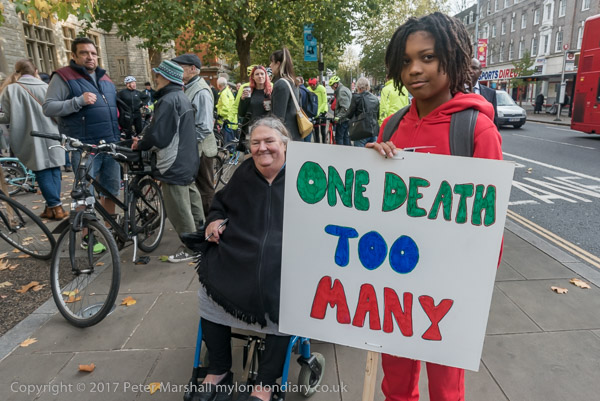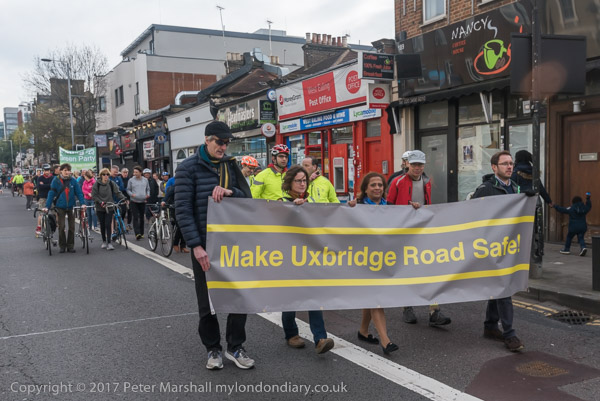
Cycle safety shouldn’t really be a controversial issue, but it is, with some, particularly some driving black cabs, seen the presence of cyclists and the provision of any infrastructure for them as some kind of attack on the divine rights of motorists. Our lives and planning have been dominated for around a century by the demands of motorists and the road lobby, with powerful groups pressing their interests, including the oil companies as well as motorists groups such as the AA and RAC.
Britain’s main road system a the start of the nineteenth century was made of toll roads, maintained on the tolls levied by turnpike trusts. By 1830s there were around 30,000 miles of these ‘turnpike roads’ in England and Wales. But then came the railways which took much of their traffic; coaching disappeared and the turnpikes fell into disrepair as the income from their tolls plummeted. Horses and carts still travelled, but largely on local journeys on muddy and rutted roads.

What changed all this was the bicycle. A device that transmits with great accuracy the irregularities of the road surface to the posterior of the rider, particularly before the widespread adoption of the inflatable tyre. By 1885 the responsibility for the condition of major roads had been transferred from the defunct turnpike trusts to the local authorities, and the Cyclists Touring’ CLub was definitely on their case, forming the Roads Improvement Association, which in 1890 was at the head of the Good Roads movement, led by William Rees Jeffreys. The CTC in 1885 and 1886 organised Roads Conferences and published guidance for county surveyors on improving road surfaces for all users, not just cyclists.

But early motorists took the ‘Mr Toad‘ line. Motoring in the early days was the preserve of the extreme wealthy who saw the world and the roads as theirs, lobbying first for the repeal of the ACT which had demanded that for public safety they be preceded by a man with a red flag. The AA was actually formed to foil police speed traps. An feature in The Guardian in 2011 quoted a satirical verse published in Punch in 1907 which neatly sums up the views of motorists:
“The roads were made for me; years ago they were made. Wise rulers saw me coming and made roads. Now that I am come they go on making roads – making them up. For I break things. Roads I break and Rules of the Road. Statutory limits were made for me. I break them. I break the dull silence of the country. Sometimes I break down, and thousands flock round me, so that I dislocate the traffic. But I am the Traffic.“
But actually the roads had been made for cyclists and because of their demands. It wasn’t until the 1930s that we had the first roads made for motorists, with roads such as the Great West Road and the Great Chertsey Road, with their separate cycle tracks alongside.

I used to ride on the cycle track beside the Great West Road on my way home from school, but twenty years later it had become impassable. Cars were parked across it in places and the road surface had been largely destroyed by the weather and by cars running across it, making it impossible to use.
We partly have the London bombers of 2005 to thank for the resurgence in cycling in the capital, when many deserted the tube fearing further outrages. The Brompton bicycle, made in Brentford also played its part, making multi-modal journeys possible using train or underground and bicycle. Later came Ken Livingstone’s 2007 proposal for what unfairly became called ‘Boris Bikes’ when they hit the streets in 2010 and later still the first cycle superhighways. These all coincided with ‘healthy lifestyles’ and greater exercise for health and a fight against obesity to turn using a bike from an index of failure into trendy living.

But we still need to make the roads, dominated for so long by cars and lorries, into safe routes for cyclists, both by providing separated routes like those 1930s cycle tracks, by banning the use of vehicles with limited all-round vision and by driver education. One good move might be a multi-stage driving test, with the first part requiring would-be drivers to demonstrate road sense on a bicycle (or for the less able, a tricycle.)
The protest in Ealing followed the death of a woman cyclist, Claudia Manera, who died a week after a collision with a lorry being driven at the Lido Junction on October 12th. You can read more about it at March for a Safe Uxbridge Road.
______________________________________________________
There are no adverts on this site and it receives no sponsorship, and I like to keep it that way. But it does take a considerable amount of my time and thought, and if you enjoy reading it, a small donation – perhaps the cost of a beer – would be appreciated.
My London Diary : London Photos : Hull : River Lea/Lee Valley : London’s Industrial Heritage
All photographs on this and my other sites, unless otherwise stated, are taken by and copyright of Peter Marshall, and are available for reproduction or can be bought as prints.
To order prints or reproduce images
________________________________________________________